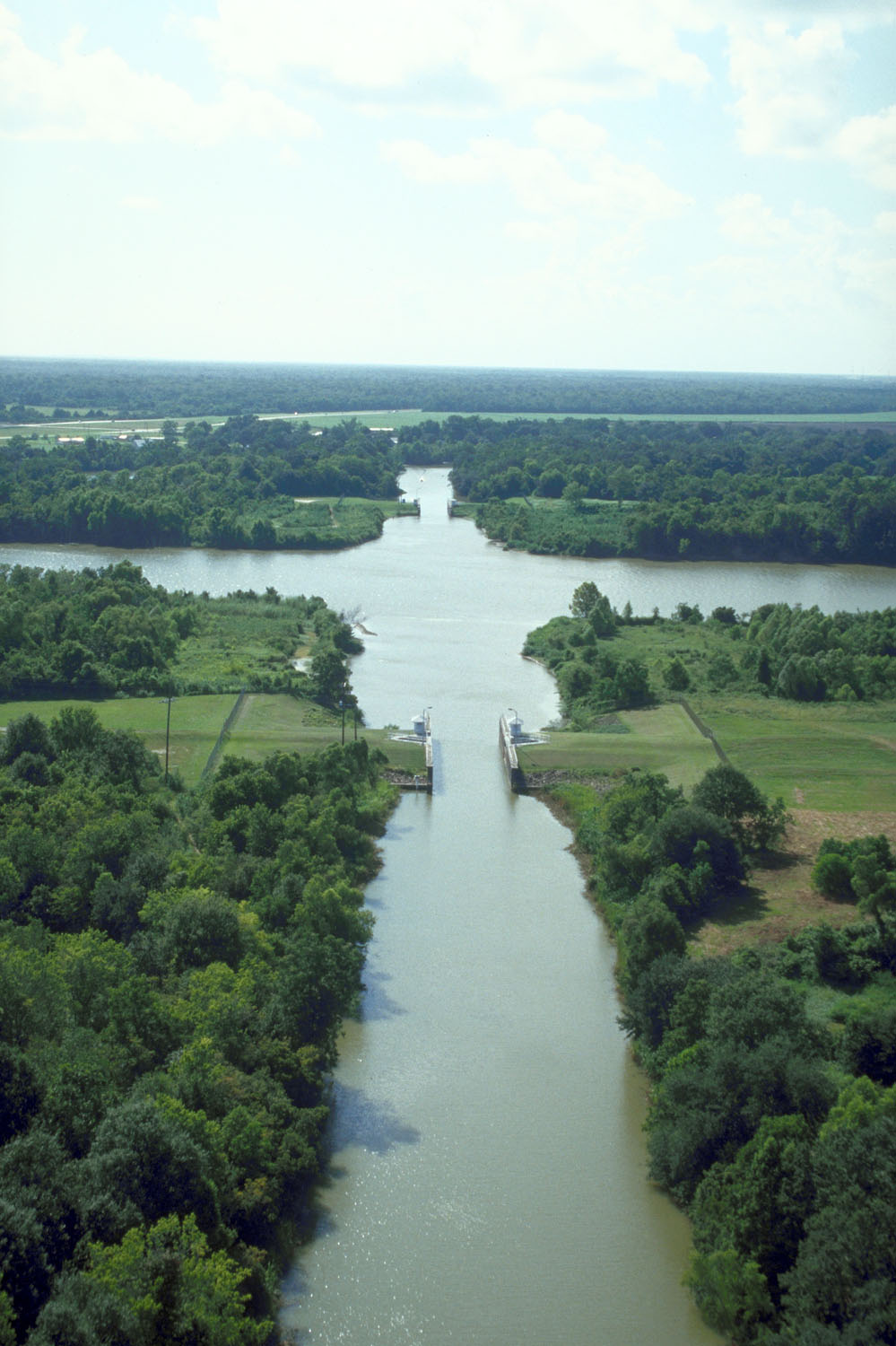|
Wax Lake Delta
Wax Lake was a lake in St. Mary Parish, Louisiana that was converted into an outlet channel, the Wax Lake outlet, to divert water from the Atchafalaya River to the Gulf of Mexico. History The history of the Wax Lake Outlet, as well as the 20,000 cfs "Charenton Drainage and Navigation Canal", the Avoca Island Cutoff (Avoca Island-Cutoff Bayou drainage channel), and to a lesser extent the Chene, Boeuf, and Black navigation channel, was to provide flood relief to the lower Atchafalaya Basin and Morgan City. Wax Lake outlet The Wax Lake outlet is an artificial channel that was created by the United States Army Corps of Engineers in 1942 to divert 30 percent of the flow from the Atchafalaya River to the Gulf of Mexico and reduce flood stages at Morgan City, Louisiana. The project design flood flow capacity for the outlet is .(Dead link) Construction In a reversal of normal building procedures construction of the bridges began first, as well as the Bayou Teche floodgates at Calumet. In ... [...More Info...] [...Related Items...] OR: [Wikipedia] [Google] [Baidu] |
Bayou Teche And Atchafalaya River
In usage in the Southern United States, a bayou () is a body of water typically found in a flat, low-lying area. It may refer to an extremely slow-moving stream, river (often with a poorly defined shoreline), marshy lake, wetland, or creek. They typically contain brackish water highly conducive to fish life and plankton. Bayous are commonly found in the Gulf Coast region of the southern United States, especially in the Mississippi River Delta, though they also exist elsewhere. A bayou is often an anabranch or minor braid of a braided channel that is slower than the mainstem, often becoming boggy and stagnant. Though fauna varies by region, many bayous are home to crawfish, certain species of shrimp, other shellfish, catfish, frogs, toads, salamanders, newts, American alligators, American crocodiles, herons, lizards, turtles, tortoises, spoonbills, snakes, and leeches, as well as many other species. Etymology The word entered American English via Louisiana French in Lou ... [...More Info...] [...Related Items...] OR: [Wikipedia] [Google] [Baidu] |
Deposition (geology)
Deposition is the geological process in which sediments, soil and rocks are added to a landform or landmass. Wind, ice, water, and gravity transport previously weathered surface material, which, at the loss of enough kinetic energy in the fluid, is deposited, building up layers of sediment. Deposition occurs when the forces responsible for sediment transportation are no longer sufficient to overcome the forces of gravity and friction, creating a resistance to motion; this is known as the null-point hypothesis. Deposition can also refer to the buildup of sediment from organically derived matter or chemical processes. For example, chalk is made up partly of the microscopic calcium carbonate skeletons of marine plankton, the deposition of which has induced chemical processes (diagenesis) to deposit further calcium carbonate. Similarly, the formation of coal begins with the deposition of organic material, mainly from plants, in anaerobic conditions. Null-point hypothesis The null ... [...More Info...] [...Related Items...] OR: [Wikipedia] [Google] [Baidu] |
Wetlands And Bayous Of Louisiana
A wetland is a distinct ecosystem that is flooded or saturated by water, either permanently (for years or decades) or seasonally (for weeks or months). Flooding results in oxygen-free (anoxic) processes prevailing, especially in the soils. The primary factor that distinguishes wetlands from terrestrial land forms or Body of water, water bodies is the characteristic vegetation of aquatic plants, adapted to the unique anoxic hydric soils. Wetlands are considered among the most biologically diverse of all ecosystems, serving as home to a wide range of plant and animal species. Methods for assessing wetland functions, wetland ecological health, and general wetland condition have been developed for many regions of the world. These methods have contributed to wetland conservation partly by raising public awareness of the functions some wetlands provide. Wetlands occur naturally on every continent. The water in wetlands is either freshwater, brackish or saltwater. The main wetland type ... [...More Info...] [...Related Items...] OR: [Wikipedia] [Google] [Baidu] |



